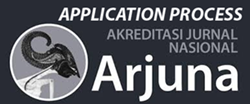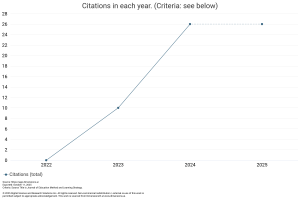Development of a Talking Stick Learning Model Assisted by Question Boxes on Students' Social Sciences Learning Outcomes
DOI:
https://doi.org/10.59653/jemls.v2i02.823Keywords:
Development of, Learning Models Talking Stick, Learning OutcomesAbstract
Education is business man For build personality in accordance with values in society or as effort help participant educate For develop and improve knowledge, skills, values, attitudes and patterns Act useful behavior for life. Formulation problem is there is enhancement results learn social studies students class V against development of the Talking Stick learning model assisted by Question Box, How Smoothness implementation of the Talking Stick learning model assisted by Question Box results learn social studies students class V SDN Kaleroang, Kec. South Bungku, Regency Morowali, What constraint in development of the Talking Stick learning model with the help of Question Box results learn social studies students class V SDN Kaleroang, Kec. South Bungku, Regency Morowali. Research purposes For know constraint in development of the Talking Stick learning model with the help of Question Box results learn social studies students class V SDN Kaleroang, Kec. South Bungku, Regency Morowali. Study This use type study development ( Research and Development). Research and development methods or in Language English Research and Development is method research used For produce product certain, and test effectiveness product the. Research result A pre-test was used For know results Study beginning student before given treatment use Development of the Talking Stick learning model assisted by Question Box.
Downloads
References
Alivvia, H., Amin, LH, Mukhlisah, I., & Fatimah, M. (2023). APPLICATION OF THE TALKING STICK METHOD TO IMPROVE THE LEARNING OUTCOMES OF FIKIH IN HAJJ MATERIAL FOR CLASS V MI MUHAMMADIYAHSIDOKERTO PLUPUH SRAGEN STUDENTS IN 2021/2022. Al'Ulum Journal of Islamic Education , 25–36. https://doi.org/10.54090/alulum.129
Amalia, I., & Setiawan, D. (2023). The Flipped Classroom Model Assisted by SOFLEN (Song for Learning) Improves Social Science Learning Outcomes. Journal of Educational Research and Development , 7 (2), 364–372. https://doi.org/10.23887/jppp.v7i2.62617
Astikajaya, IM (2022). Talking Stick Type Cooperative Learning Model to Improve Hindu Religion Learning Outcomes in Class VI Elementary School Students. Journal of Educational Action Research , 6 (4), 499–504. https://doi.org/10.23887/jear.v6i4.52109
Astuti, DB, & Wahid, FS (2024). The Influence of the Talking Stick Type Cooperative Learning Model on Student Learning Achievement (Experimental Study at Losari Kidul 1 and Losari Kidul 2 State Elementary Schools) . 2 .
Bagiada, M., & Jayanta, INL (2022). Levidio Presentation Media-Assisted Learning Activities Improve the Scientific Literacy and Metacognitive Abilities of Fifth Grade Elementary School Students . 10 (1).
Cahyani, NKA, & Agustika, GNS (nd). Contextual Teaching and Learning Model Assisted by Question Box Media and Its Influence on Elementary School Students' Mathematics Knowledge Competency .
Fajeri, L., Berlian, L., & Tunjung Biru, L. (2023). The Influence of the Talking Stick Type Learning Model Assisted by Mystery Box Media on Student Learning Outcomes on the Sonar System in Animals. PENDIPA Journal of Science Education , 7 (2), 150–157. https://doi.org/10.33369/pendipa.7.2.150-157
Irmawati, S., Prasetyo, T., & Hartono, R. (2022). Using the Talking Stick Type Cooperative Learning Model to Improve Student Learning Outcomes on Social Issues Material. Journal of Elementary School Teaching , 1 (1), 23–31. https://doi.org/10.56855/jpsd.v1i1.47
Key, K. (nd). Numbered heads together (NHT), wordwall, learning process, learning outcomes .
Masana, K. (2022). The Talking Stick Type Cooperative Learning Model Improves Mathematics Learning Outcomes for Fifth Grade Elementary School Students. Journal of Educational Action Research , 6 (4), 492–498. https://doi.org/10.23887/jear.v6i4.45861
Nadhira, T., & Simamora, AB (2023). The Influence of Talking Stick Learning Media on the Learning Outcomes of Class II Students in the Sub-theme of Playing at Friends' Houses at SD Negeri 124405 Pematang Siantar . 1 (2).
Naisau, PB, Jampel, IN, & Suartama, IK (2021). Media Game Ludo Word Game in STAD Cooperative Learning in Social Sciences Subjects in Middle School . 8 (1).
Phalguna, IWW (2020). Talking Stick Learning Model Assisted with Audiovisual Media Toward Science Knowledge Competence . 4 (4).
Putri, NPI, I Gusti Ayu Tri Agustiana, & Alexander Hamonangan Simamora. (2022). Active Learning Model Assisted by Fun Thinkers Media on Primary School Student Learning Outcomes. MIMBAR PGSD Undiksha , 10 (3), 541–549. https://doi.org/10.23887/jjpgsd.v10i3.52287
Sastrawan, PAP, & Sudana, DN (2021). Mind Mapping Assisted Talking Stick Learning Model on Speaking Skills. Journal of Educational Technology , 4 (4), 495. https://doi.org/10.23887/jet.v4i4.27103
Sultan, MA (2022). Learning Results with the Talking Stick Type Cooperative Learning Model Assisted by Question Box Media . 6 .
Trihartoto, A., & Indarini, E. (2022). The Effectiveness of the Jigsaw Type Cooperative Learning Model on Elementary School Thematic Learning Outcomes. Scientific Journal of Teacher Professional Education , 5 (1), 117–124. https://doi.org/10.23887/jippg.v5i1.45547
Wahyulina, D., & Dinullah, RNI (2024). Using the Pair Check Model Assisted by Question Cards to Improve Learning Achievement in Circle Material . 5 .
Wantini, W., Waharjani, W., Wijayanti, CS, & Suyatno, S. (2023). Improving Learning Outcomes of Islamic Religious Education for Elementary School Students with the Application of the Talking Stick Learning Model. Al-Ta Lim Journal , 30 (2), 157–169. https://doi.org/10.15548/jt.v30i2.808
Downloads
Published
How to Cite
Issue
Section
License
Copyright (c) 2024 Julitha Pongbatu, Hasan, Misnah

This work is licensed under a Creative Commons Attribution-ShareAlike 4.0 International License.
Authors who publish with this journal agree to the following terms:
- Authors retain copyright and grant the journal right of first publication with the work simultaneously licensed under a Creative Commons Attribution-ShareAlike that allows others to share the work with an acknowledgement of the work's authorship and initial publication in this journal.
- Authors are able to enter into separate, additional contractual arrangements for the non-exclusive distribution of the journal's published version of the work (e.g., post it to an institutional repository or publish it in a book), with an acknowledgement of its initial publication in this journal.
- Authors are permitted and encouraged to post their work online (e.g., in institutional repositories or on their website) prior to and during the submission process, as it can lead to productive exchanges, as well as earlier and greater citation of published work (See The Effect of Open Access).
























